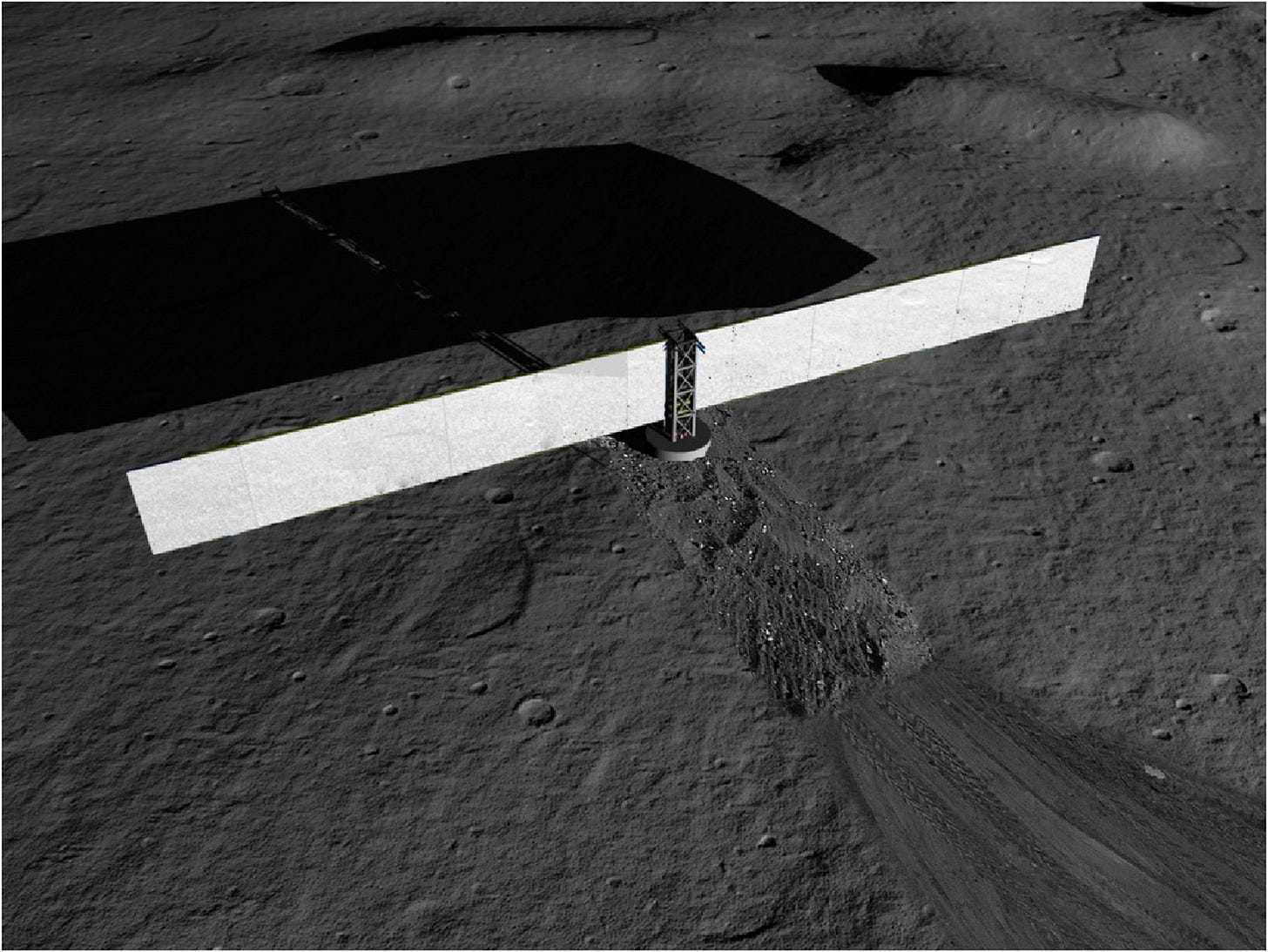U.S. Expedites Lunar Nuclear Reactor Plans Amid Competition with China and Russia
This initiative aims to establish a 100-kilowatt reactor by 2030, surpassing prior NASA research on a 40-kilowatt system targeted for the early 2030s.
SPACE — Transportation Secretary Sean Duffy, acting as interim NASA administrator, is preparing to announce directives accelerating the development of a nuclear reactor on the moon to support future lunar missions.
Above Photo: NASA - An artist’s concept of a fission surface power system on the surface of the moon. The nuclear reactor has been buried below the lunar surface to make use of lunar soil as additional radiation shielding. The engines that convert heat energy to electricity are in the tower above the reactor, and radiators extend out from the tower to radiate into space any leftover heat energy that has not been converted to electricity. The power system would transmit a steady 40 kW of electric power, enough for about eight houses on Earth, to the lunar outpost.
This initiative aims to establish a 100-kilowatt reactor by 2030, surpassing prior NASA research on a 40-kilowatt system targeted for the early 2030s. The move reflects efforts to maintain U.S. competitiveness in space, particularly against joint China-Russia lunar projects.
NASA seeks industry proposals within 60 days, designating a project leader to advance the effort. The directive emphasizes the strategic importance of lunar power sources, noting that the first nation to deploy a reactor could establish exclusion zones impacting others.
This aligns with broader U.S. space policy under the Trump administration, prioritizing human spaceflight amid budget constraints. Concurrently, Duffy will issue orders to expedite the replacement of the International Space Station with commercial alternatives by 2030, addressing potential gaps as China advances its orbital capabilities.
U.S. Lunar Nuclear Reactor Initiative
Keep reading with a 7-day free trial
Subscribe to The Standeford Journal - News, Intel Analysis to keep reading this post and get 7 days of free access to the full post archives.





